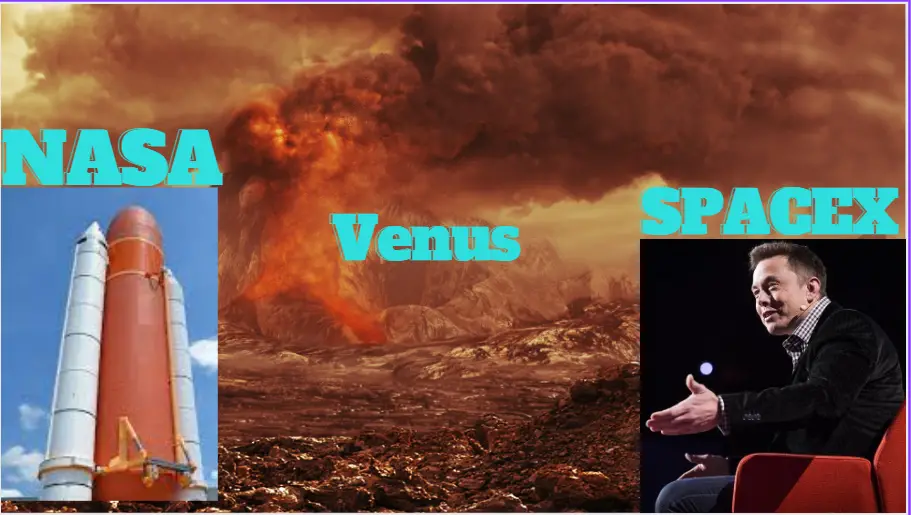When it comes to planets, there are few better places to visit than Venus, even if you’re not planning to stay there long-term. At an average temperature of over 755 degrees Fahrenheit and an atmospheric pressure more than 90 times that of Earth’s, Venus certainly isn’t the most hospitable place in the Solar System. But that hasn’t stopped NASA and SpaceX founder Elon Musk from proposing an idea that will make this planet more hospitable to human life – by first making it habitable to plants.
How bad is the problem?
A planet with a thick atmosphere and high temperatures, Venus is far from being habitable. Yet, according to NASA, the planet may be closer than we think in solving its environmental problems. Recently, at a talk called Making Humans a Multi-Planet Species, held by SpaceX CEO Elon Musk on September 27th at the International Astronautical Congress in Adelaide, Australia, he revealed his plan for how humans might colonize one of our closest planetary neighbors. According to Mr. Musk, the biggest problem facing any potential human colony on Venus is heat – given that it has an average temperature of 462 degrees Fahrenheit (or 243 degrees Celsius). In order to solve this problem, Mr. Musk proposes to start by sending a massive reflective solar shade into orbit around the planet which would protect surface areas where human habitats are established from solar radiation and help keep surface temperatures tolerable. When completed, the system could end up costing less than $2 billion. To prevent runaway climate change, another system would pump greenhouse gases out of the atmosphere and store them underground. The cost of this project is estimated to be $4 billion initially plus $200 million per year for maintenance costs. Once these two systems are in place, settlers could live on Venus without having to wear pressure suits every day or spend their lives under lights as they do now.
What are we doing about it?
There are three major ways that we’re going about the colonization of Venus. These include sending a probe, landing humans on the planet surface, or terraforming the planet. Sending a probe is the cheapest option but would take a long time with no guarantee of success. Landing humans on the planet is probably the most expensive one, but it could be done relatively quickly with a high chance of success. The last option is what many people believe is the best way-terraforming Venus. Terraforming means altering the climate, geography, atmosphere and other factors so as to make it more Earth-like. It’s not easy though; scientists say that in order for us to terraform Venus, we’d need powerful technology not currently available. The first problem is that our oceans are acidic. To counteract this, we’d have to release the excess CO2 from Venus’ atmosphere into the ocean at an alarmingly quick pace. Then, because Venus has practically no ozone layer, solar radiation would pose another issue.
How should we prepare?
The thought of colonizing another planet may seem like a farfetched idea, but the truth is that Earth is running out of natural resources. In order to support a growing population, humans need more land. Enter Venus, the solar system’s second closest planet after Mercury.
When should we go?
Today, the Earth is warming at a rate faster than any time in our history. This has caused an increase in natural disasters such as hurricanes and tornadoes. However, if we are able to find an inhabitable planet with the right conditions, then we would have an escape plan. In this case, many scientists believe that Venus could be the planet that we turn into Earth 2.0.
What will life be like there?
The planet is currently extremely hot, with a surface temperature of 862 degrees Fahrenheit (462 degrees Celsius). This is due to the fact that the atmosphere of Venus is more than 95% carbon dioxide, which causes infrared radiation from the sun to be trapped in the atmosphere. The atmosphere traps heat like a blanket trapping heat in a house. In order to make the planet habitable, this greenhouse gas effect needs to be reversed by reducing atmospheric CO2 levels to less than 1%. One possible way of doing this would be through an artificial carbon dioxide scrubber powered by nuclear reactors or wind turbines on Earth.
Final thoughts
The future of colonization may be on a planet that is not Earth. This idea of living off the land instead of destroying what we already have seems like the perfect solution for our species’ survival. However, there are many things that need to be considered before any type of colonization happens. How will we keep people alive when they are so far away from their home? If there are more people on this planet than the Earth, how will they divide up resources? What about weather? Will there be some sort of force field or dome to protect them from meteorites or solar flares? Will other countries get involved with the colonization process too? There are just so many unanswered questions at this point. Hopefully in time, as we learn more about life in space, these questions can be answered and some solutions can come into place.
![]()
